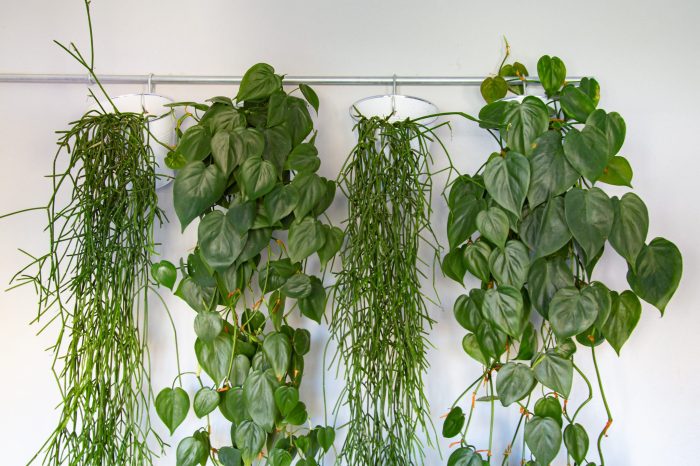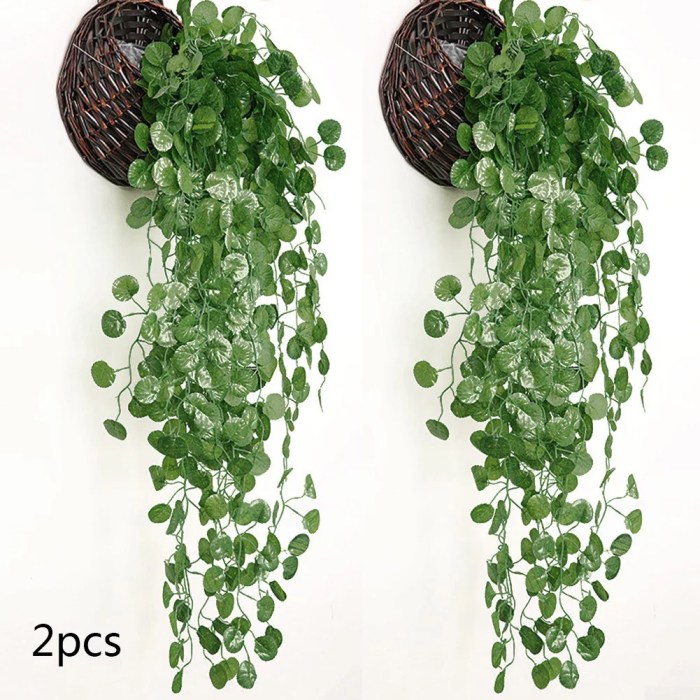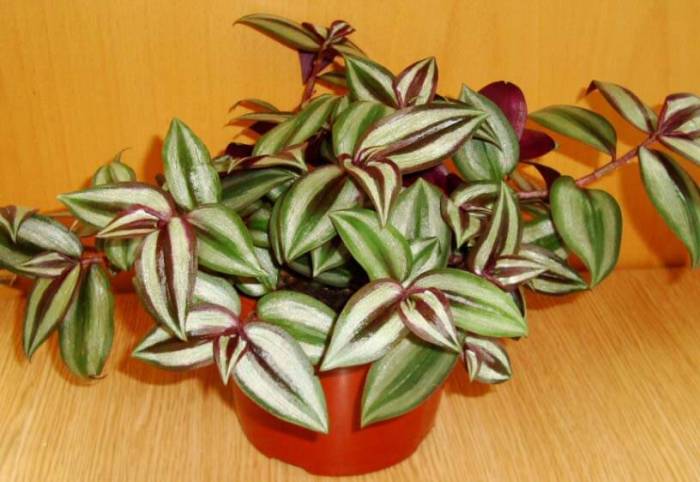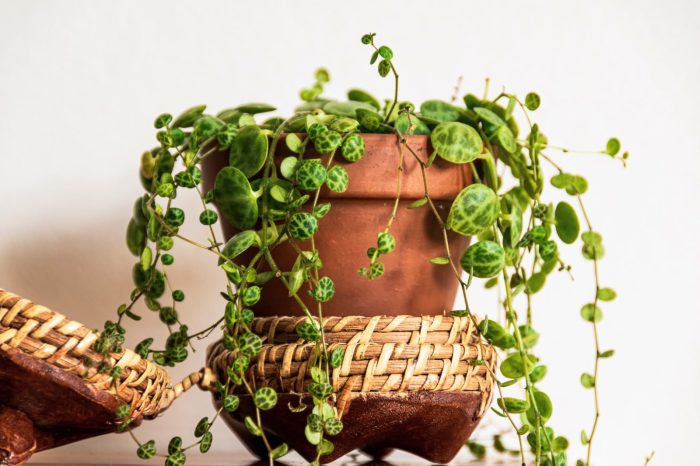Easy trailing indoor plants are a great way to add life and greenery to your home without a lot of fuss. These plants are easy to care for and can tolerate a wide range of conditions, making them ideal for beginners and experienced plant parents alike.
In this guide, we’ll cover everything you need to know about easy trailing indoor plants, from choosing the right plants to caring for them and troubleshooting common problems.
Popular Indoor Plants
Indoor plants have become increasingly popular in recent years, adding a touch of nature and freshness to our living spaces. Not only do they beautify our homes, but they also purify the air, reduce stress, and boost our mood. However, choosing the right indoor plants can be overwhelming, especially for those who are new to gardening.
Easy trailing indoor plants, such as the pothos and spider plant, are perfect for adding a touch of greenery to your home. If you’re looking for something a little more dramatic, consider hanging houseplants like the string of pearls or the easiest hanging houseplants . These plants will add a touch of elegance and style to any room.
Here is a list of easy-to-care-for indoor plants that are perfect for beginners and experienced plant enthusiasts alike:
These plants are known for their hardiness, adaptability, and diverse growth habits, making them suitable for various indoor environments. Whether you prefer trailing plants, succulents, or flowering varieties, there is an indoor plant that will complement your home and bring joy to your life.
Trailing Plants, Easy trailing indoor plants
Trailing plants are a great way to add a touch of greenery and elegance to your home. They can be grown in hanging baskets, on shelves, or even on the floor, adding a cascading effect that creates a lush and inviting atmosphere.
Here are some popular trailing indoor plants:
- Pothos (Epipremnum aureum):Also known as Devil’s Ivy, Pothos is a low-maintenance plant with heart-shaped leaves that come in various shades of green and yellow. It is highly adaptable and can tolerate low light conditions, making it a perfect choice for beginners.
- Philodendron (Philodendron scandens):This trailing plant is known for its glossy, heart-shaped leaves that can range in size from small to large. Philodendron is a fast-growing plant that prefers bright indirect light and well-draining soil.
- Spider Plant (Chlorophytum comosum):With its long, arching leaves and spiderette plantlets, the Spider Plant is a unique and easy-to-care-for trailing plant. It prefers bright indirect light and can tolerate occasional neglect, making it a great choice for busy individuals.
- String of Hearts (Ceropegia woodii):This trailing plant is known for its delicate, heart-shaped leaves that resemble a string of hearts. It prefers bright indirect light and well-draining soil, and its cascading growth habit makes it perfect for hanging baskets.
- Burro’s Tail (Sedum morganianum):With its plump, fleshy leaves that resemble a burro’s tail, this trailing succulent is a popular choice for indoor gardens. It prefers bright indirect light and well-draining soil, and its unique appearance adds a touch of whimsy to any space.
Plant Care Basics

Nurturing easy trailing indoor plants is a rewarding experience, requiring a few essential care tips to ensure their thriving growth. Understanding their lighting requirements, watering habits, soil preferences, and ideal temperature and humidity ranges is crucial for optimal plant health and beauty.
Lighting Requirements
Most easy trailing indoor plants prefer bright indirect light. Avoid exposing them to direct sunlight, as this can scorch their leaves. Some plants, such as the Snake Plant and ZZ Plant, can tolerate low light conditions, making them suitable for areas with limited natural light.
Watering Frequency
Overwatering is a common mistake to avoid with trailing indoor plants. Allow the soil to dry out slightly between waterings. To determine the soil’s moisture level, insert your finger into the soil up to the first knuckle. If the soil feels dry, it’s time to water.
Avoid using cold water and opt for room temperature water instead.
Soil Preferences
Well-draining soil is essential for trailing indoor plants. A mixture of potting soil, perlite, and peat moss creates a well-aerated and moisture-retentive environment. The pH level of the soil should be slightly acidic, around 6.0 to 6.5.
Temperature and Humidity
Most easy trailing indoor plants thrive in temperatures between 65°F and 80°F (18°C to 27°C). Avoid exposing them to extreme temperatures or cold drafts. Maintaining moderate humidity levels is beneficial, especially during the winter months. Consider using a humidifier or misting the plants regularly.
Propagation Methods

Propagating easy trailing indoor plants can multiply your greenery without spending a dime. Various methods exist, each with its advantages and suitability for specific plants.
Stem Cuttings
Stem cuttings involve taking a section of a healthy stem and encouraging it to develop roots. To start, select a stem with several nodes (areas where leaves attach). Cut the stem just below a node using a sharp, sterile knife or pruning shears.
Remove any leaves from the bottom inch or two of the stem. Dip the cut end into rooting hormone, which promotes root growth. Plant the cutting in a pot filled with a well-draining potting mix. Keep the soil moist and provide bright, indirect light.
After several weeks, roots should develop, and the cutting can be transplanted into a larger pot.
Layering
Layering is a technique where a stem is encouraged to root while still attached to the parent plant. Select a long, flexible stem and make a small incision in the middle. Apply rooting hormone to the incision and cover it with moist soil.
Keep the soil moist and provide bright, indirect light. After several weeks, roots should develop at the incision site. Once the roots are well-established, the stem can be cut from the parent plant and transplanted into a new pot.
Division
Division is suitable for plants that form clumps or rosettes. Gently lift the plant from its pot and separate the clumps or rosettes into individual plants. Each division should have its roots and foliage. Replant the divisions in separate pots filled with fresh potting mix.
Keep the soil moist and provide bright, indirect light. After several weeks, the divisions should establish themselves as independent plants.
Troubleshooting Common Issues: Easy Trailing Indoor Plants

Maintaining easy trailing indoor plants is generally straightforward, but occasional issues may arise. By identifying and addressing these problems promptly, you can ensure your plants thrive.
Yellowing Leaves
Yellowing leaves are a common sign of distress in plants. Understanding the underlying causes and taking appropriate action can restore plant health.
-
-*Nutrient deficiency
Lack of essential nutrients, such as nitrogen, can cause leaves to turn yellow. Fertilize regularly to prevent deficiencies.
-*Overwatering
Excess moisture can lead to root rot, which inhibits nutrient uptake and causes yellowing leaves. Allow soil to dry between waterings.
-*Sunlight deficiency
Insufficient light can cause plants to lose chlorophyll, resulting in yellow leaves. Provide adequate sunlight or artificial lighting.
-*Pest infestation
Pests like spider mites and aphids can feed on leaves, causing yellowing and other damage. Inspect plants regularly and apply organic pest control measures.
Pests and Diseases
Various pests and diseases can affect easy trailing indoor plants. Early detection and treatment are crucial to minimize damage.
-
-*Spider mites
These tiny pests spin webs on leaves, causing yellowing and stippling. Treat with insecticidal soap or neem oil.
-*Aphids
Small, soft-bodied insects that suck sap from leaves, causing yellowing and stunted growth. Control with insecticidal soap or neem oil.
-*Mealybugs
Easy trailing indoor plants are a great way to add a touch of greenery to your home without taking up too much space. If you’re looking for an easy-care option, consider easy care trailing plants such as pothos, spider plants, or wandering jew.
These plants are tolerant of neglect and can thrive in a variety of conditions, making them ideal for busy plant parents. With their long, trailing vines, easy trailing indoor plants can add a touch of elegance and drama to any room.
White, cottony insects that feed on plant juices, leaving behind a sticky residue. Remove manually or treat with insecticidal soap.
-*Powdery mildew
A fungal disease that causes a white powdery growth on leaves, inhibiting photosynthesis. Treat with a fungicide or neem oil.
Wilting or Drooping
Wilting or drooping plants indicate a problem that needs attention. Diagnosing the underlying cause and addressing it promptly is essential for plant recovery.
-
-*Underwatering
Lack of moisture can cause plants to wilt and droop. Water thoroughly and allow excess water to drain.
-*Overwatering
Excess moisture can suffocate roots, leading to wilting and yellowing leaves. Reduce watering frequency and allow soil to dry between waterings.
-*Temperature stress
Extreme temperatures can cause plants to wilt or droop. Ensure plants are placed in an environment with optimal temperature ranges.
-*Nutrient deficiency
Lack of essential nutrients can weaken plants, making them susceptible to wilting. Fertilize regularly to prevent deficiencies.
Design and Decor Ideas

Incorporating easy trailing indoor plants into home decor adds a touch of nature and freshness to any space. These plants, with their cascading vines and lush foliage, offer a variety of options for creative displays.
Creative Display Ideas
Hang trailing plants in macrame hangers or baskets to create a bohemian or rustic atmosphere. Position them near windows or on walls to allow their vines to gracefully cascade down.
Utilize plant stands of different heights to add depth and dimension to a room. Place taller stands near windows for optimal light, while shorter stands can be used to create cozy corners.
If you’re looking for easy trailing indoor plants that require minimal care, you’ll want to consider hanging plants. Hanging plants are a great way to add greenery to your home without taking up too much space. And because they’re suspended in the air, they’re less likely to be knocked over by pets or children.
Best of all, many hanging plants are very easy to care for, making them a great choice for busy people or those who don’t have a lot of experience with plants.
Choosing Plants for Different Rooms and Styles
Consider the size, shape, and color of the plant when selecting it for a specific room. For smaller spaces, opt for plants with compact growth habits, such as String of Pearls or Spider Plant. Larger rooms can accommodate larger plants, such as Philodendron scandens or Pothos.
Match the plant’s style to the decor of the room. For a modern or minimalist aesthetic, choose plants with clean lines and solid colors, such as Snake Plant or ZZ Plant. For a more bohemian or eclectic look, opt for plants with variegated foliage or intricate patterns, such as Calathea or Maranta.
Trailing Plant Comparison Table
The following table provides a comparison of popular trailing plants based on their growth habits, leaf shapes, and colors:
| Plant | Growth Habit | Leaf Shape | Color |
|---|---|---|---|
| String of Pearls | Cascading | Round | Green |
| Spider Plant | Cascading | Long and narrow | Green and white |
| Philodendron scandens | Climbing | Heart-shaped | Green |
| Pothos | Climbing | Heart-shaped | Green, variegated |
| Snake Plant | Upright | Long and narrow | Green |
| ZZ Plant | Upright | Oval | Dark green |
| Calathea | Upright | Oval | Variegated |
| Maranta | Upright | Oval | Variegated |
End of Discussion

With a little care and attention, easy trailing indoor plants can thrive in your home for years to come. So what are you waiting for? Get started today and enjoy the benefits of bringing nature indoors.
Essential FAQs
What are some easy trailing indoor plants?
Some easy trailing indoor plants include pothos, philodendron, and spider plants.
How often should I water my trailing indoor plants?
Water your trailing indoor plants when the top inch of soil is dry to the touch.
What are some common problems with trailing indoor plants?
Some common problems with trailing indoor plants include yellowing leaves, pests, and diseases.